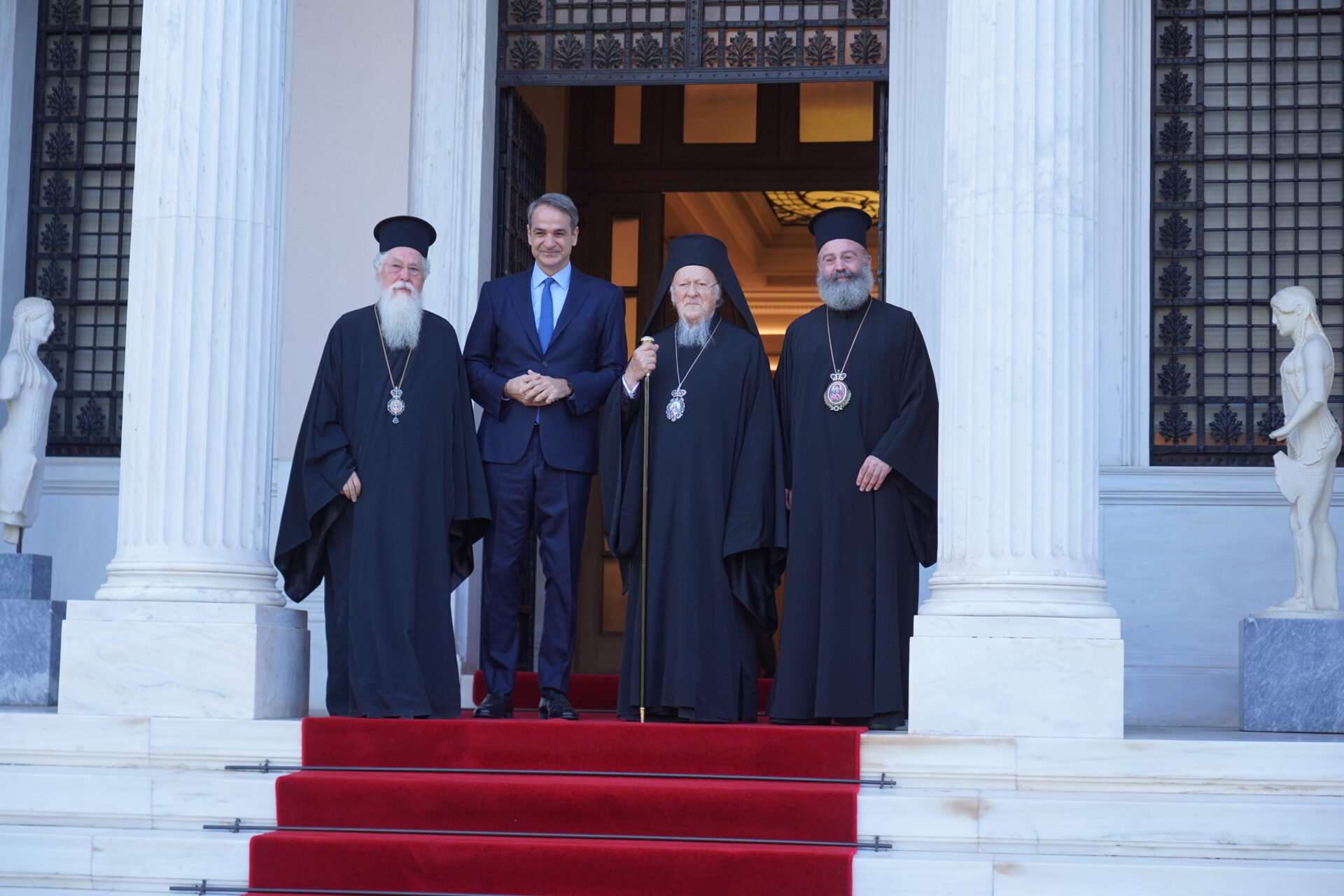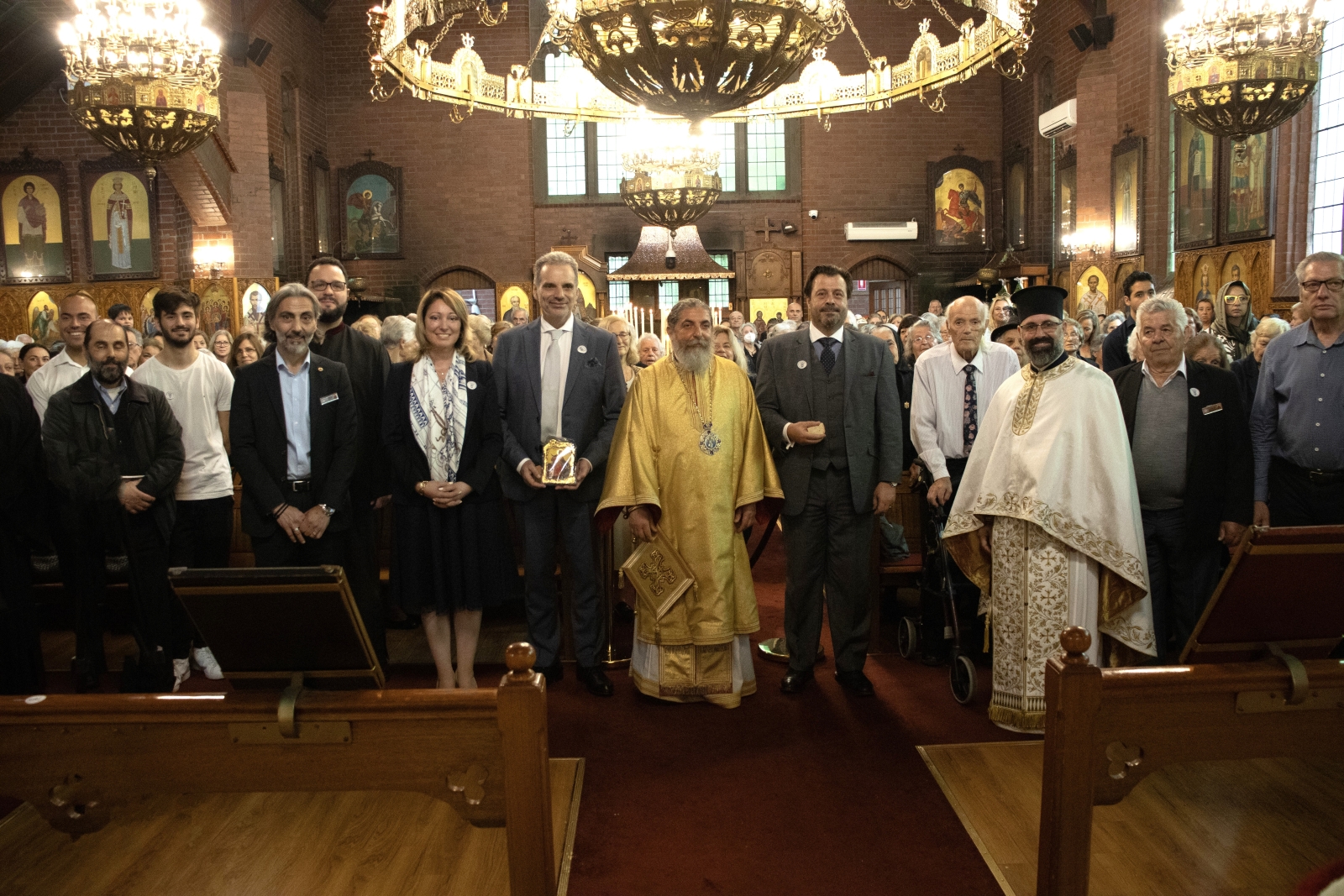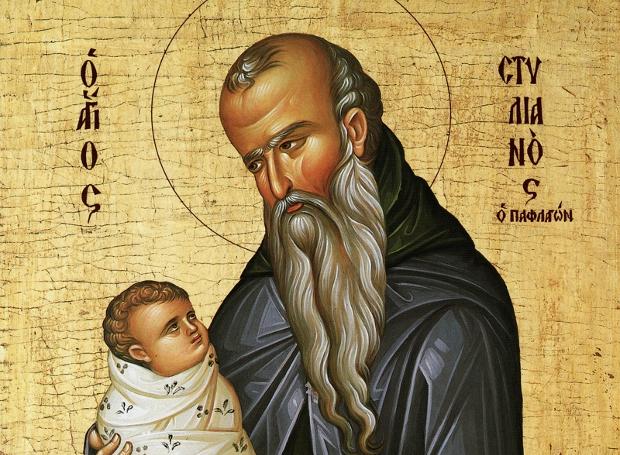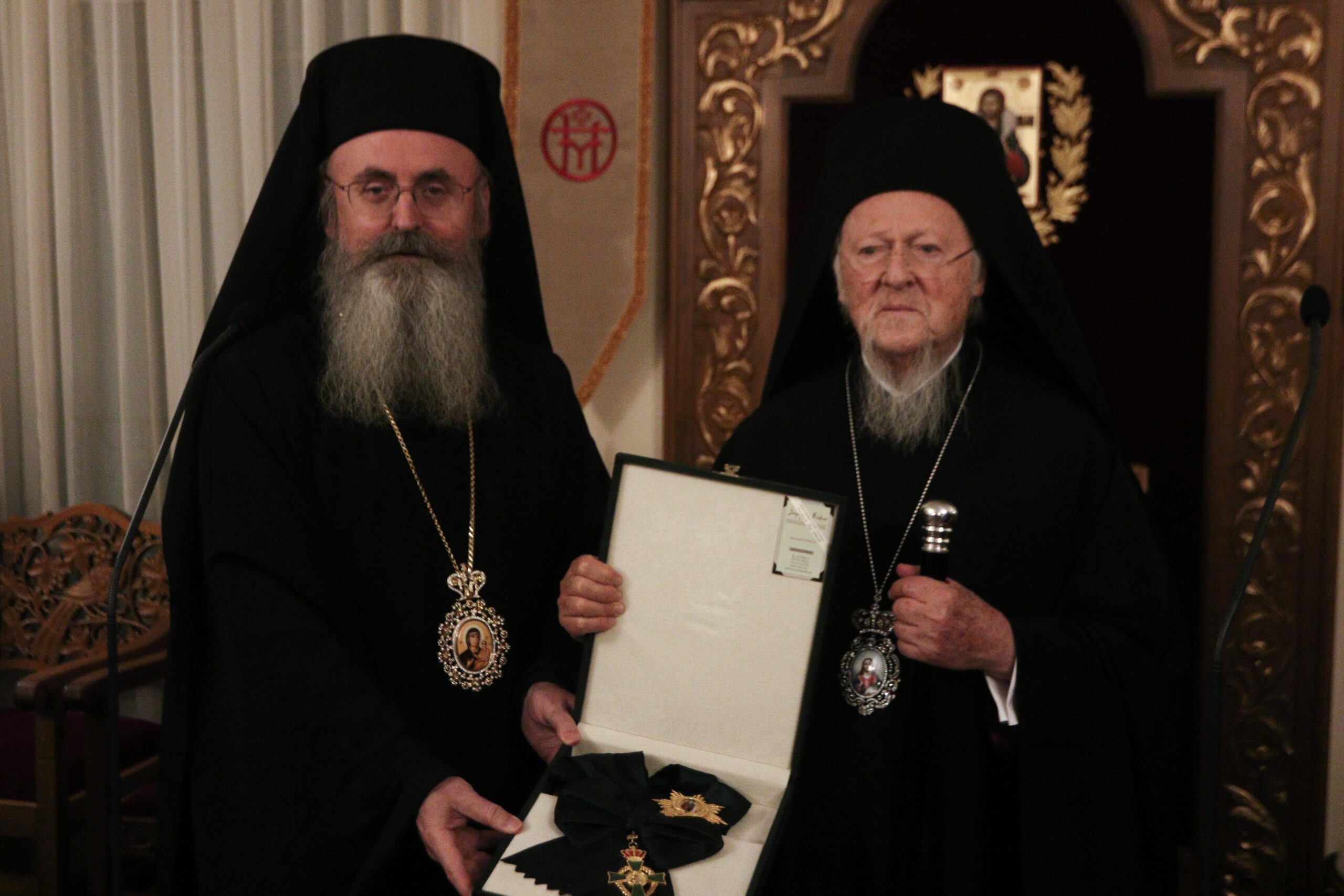Saint Paul the Confessor, Archbishop of Constantinople (6 November)
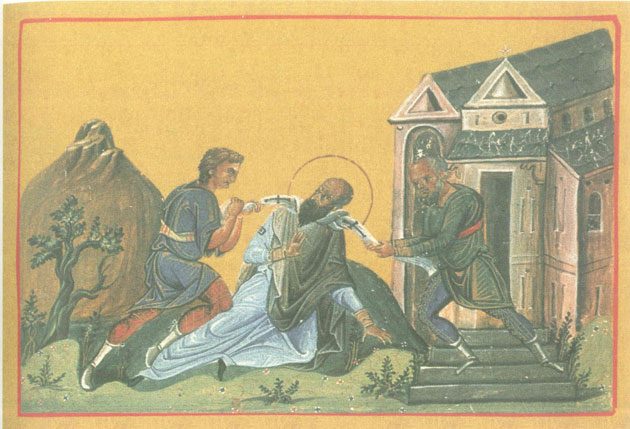

Saint Paul the Confessor, Archbishop of Constantinople, was chosen to the patriarchal throne after the death of Patriarch Alexander (+ 340), when the Arian heresy had again flared up. Many of the Arians were present at the Council which selected the new Archbishop of Constantinople. They revolted in opposition to the choice of Saint Paul, but the Orthodox at the Council were in the majority.
The emperor Constantius, ruling over the Eastern half of the Roman Empire, was an Arian. He was not in Constantinople for the election of the Archbishop, and so it took place without his consent. Upon his return, he convened a council which illegally deposed Saint Paul, and the emperor banished him from the capital. In place of the saint they elevated Eusebius of Nicomedia, an impious heretic. Archbishop Paul withdrew to Rome, where other Orthodox bishops were also banished by Eusebius.
Eusebius did not rule the Church of Constantinople for long. When he died, Saint Paul returned to Constantinople, and was greeted by his flock with love. But Constantius exiled the saint a second time, and so he returned to Rome. The Western emperor Constans wrote a harsh letter to his Eastern co-ruler, which he sent to Constantinople along with the holy exiled archpastor. The threats worked, and Saint Paul was reinstated upon the archepiscopal throne.
But soon the pious emperor Constans, a defender of the Orthodox, was treacherously murdered during a palace coup. They again banished Saint Paul from Constantinople and this time sent him off in exile to Armenia, to the city of Cucusus, where he endured a martyr’s death.
When the Archbishop was celebrating the Divine Liturgy, Arians rushed upon him by force and strangled him with his own omophorion. This occurred in the year 350. In 381, the holy Emperor Theodosius the Great solemnly transferred the relics of Saint Paul the Confessor from Cucusus to Constantinople. In 1326, the relics of Saint Paul were transferred to Venice.


Saint Athanasius the Great, a contemporary of Saint Paul, writes briefly about his exiles, “Saint Paul the first time was sent by Constantine to Pontus, the second time he was fettered with chains by Constantius, and then he was locked up in Mesopotamian Syngara and from there moved to Emesus, and the fourth time to Cappadocian Cucusus in the Taurian wilderness.”
Part of the Saint’s skull is located in the Holy Monastery of Simonópetra on Mount Athos. The Saint’s incorrupt relics are to be found in the Roman Catholic church of Saint George of Greater Venice. A fragment of the Saint’s relics is located in the Saint Alexander Nevsky Lavra at Saint Petersburg.
Saint Paul was from Thessalonica. He became the secretary of Alexander, Patriarch of Constantinople (see Aug. 30), a deacon, and then the successor of Saint Alexander in about 337. Because of his virtue, his eloquence in teaching, and his zeal for Orthodoxy, the Arians hated and feared him. When the Arian Emperor Constantius, who was in Antioch, learned of Paul’s election, he exiled Paul and proclaimed the Arian Eusebius Patriarch. Saint Paul went to Rome, where he found Saint Athanasius the Great also in exile. Provided with letters by Pope Julius, Paul returned to Constantinople, and after the death of Eusebius in 342, ascended again his rightful throne; the Arians meanwhile elected Macedonius, because he rejected the Son’s con-substantiality with the Father (and the divinity of the Holy Spirit besides). When Constantius, yet at Antioch, learned of Paul’s return, he sent troops to Constantinople to drive Paul out. The Saint returned to Rome, where Saint Athanasius also was again in exile. Constans, Emperor of the West, Constantius’ brother, but Orthodox, wrote to Constantius that if Athanasius and Paul were not allowed to return to their sees, he would come with troops to restore them him-self. So Paul again returned to his throne. After the death of Constans, however, Constantius had Paul deposed. Because of the love of the people for Saint Paul, Philip the Prefect, who was sent for him, was compelled to arrest him secretly to avoid a sedition. Paul was banished to Cucusus, on the borders of Cilicia and Armenia; a town through which his most illustrious successor, Saint John Chrysostom would also pass on his way to Comana in his last exile. In Cucusus, about the year 350, as Saint Paul was celebrating the Divine Liturgy in the little house where he was a prisoner, the Arians strangled him with his own omophorion, so much did they fear him even in exile. His holy relics were brought back to Constantinople with honour by the Emperor Theodosius the Great.
When Blessed Patriarch Alexander lay on his deathbed, the sorrowing faithful asked him who he would have follow him as the chief shepherd of the spiritual flock of Christ. He said: “If you desire a shepherd who will teach you and who will shine with virtues, choose Paul; but if you only want a suitable man, externally adorned, choose Macedonius.” The people chose Paul. Unfortunately, this was not accepted by the Arian heretics, nor was it accepted by Emperor Constantius, who was then in Antioch. Paul was soon deposed, and fled to Rome with St. Athanasius the Great. In Rome, Pope Julian and Emperor Constans received them warmly and upheld them in their Orthodox Faith. Emperor Constans and Pope Julian saw to it that Paul was returned to his throne, but when Emperor Constans died the Arians raised their heads again, and Patriarch Paul was banished to Cucusus in Armenia. Once, as Paul was celebrating the Divine Liturgy in exile, he was attacked by the Arians and strangled with his omophorion, in the year 351 A.D. In 381 A.D., during the reign of Emperor Theodosius, Paul’s relics were transferred to Constantinople, and in the year 1236 A.D. they were translated to Venice, where they still repose. His beloved priests and notaries, Marcian and Martyrius (October 25), suffered soon after their patriarch.
Apolytikion of Paul the Confessor
Third Tone
Thy confession of the one divine Faith showed thee to the Church to be a new Paul and a zealot among priests, O holy one. The righteous blood both of Abel and Zachary with thee doth cry out together unto the Lord. Righteous Father, intercede with Christ God in our behalf that His great mercy may be granted unto us.
Kontakion of Paul the Confessor
Second Tone
Thou shonest on earth, a star bright with celestial light, and now thou dost shine enlightenment on all the Church, in behalf of which thou didst struggle, laying down thine own life, O Paul, and like Abel and Zachary, thy blood doth cry out most clearly to the Lord.
Source: oca.org / goarch.org / westserbdio.org

